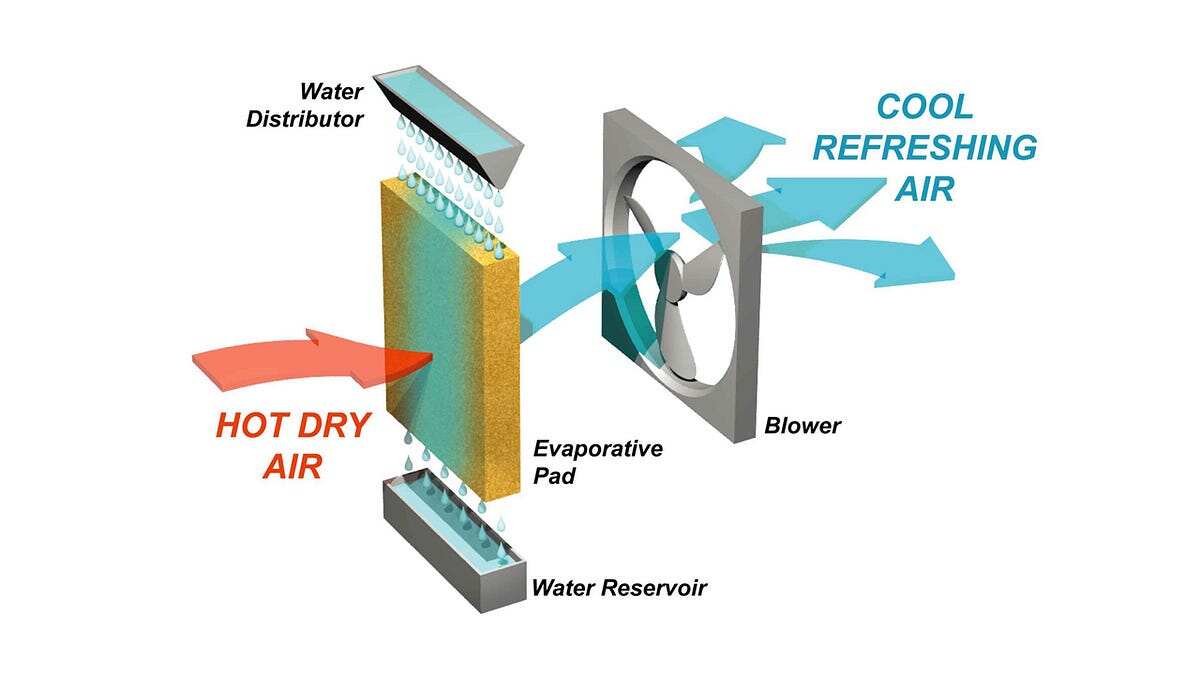
Evaporative cooling systems have gained popularity in homes and offices as an energy-efficient alternative to traditional HVAC systems. Nevertheless, despite their advantages, various misunderstandings remain about their performance, price, and appropriateness. This article addresses six common myths and sets the record straight, helping you make informed decisions for your cooling needs.
1. Evaporative Cooling Systems Are Only Suitable for Dry Climates
One prevalent misconception is that evaporative cooling systems (also known as swamp coolers) are effective solely in arid regions. While itβs true that they perform exceptionally well in low-humidity environments, modern designs have expanded their functionality. With technological advancements, many units are now equipped to handle higher humidity levels effectively, making them a viable choice even in moderately humid areas.
For offices and homes in urban areas where humidity fluctuates, hybrid models that combine evaporative cooling with traditional HVAC systems are an excellent option. These systems optimize performance by adjusting airflow and humidity levels based on real-time conditions.
2. Evaporative Cooling Is Inefficient Compared to Air Conditioning.
Many believe evaporative coolers cannot match the efficiency of air conditioners. In reality, evaporative cooling systems are highly efficient, often consuming up to 75% less electricity than traditional AC units.
Unlike HVAC systems that use refrigerants and compressors, evaporative coolers rely on natural processes: water evaporation and airflow. This translates to lower energy consumption and reduced greenhouse gas emissions, making them an environmentally friendly solution for both residential and commercial spaces.
3. They Are Expensive to Install and Maintain
Another myth is that evaporative cooling systems are costly to install and maintain. In fact, they are typically more affordable upfront than traditional HVAC systems due to their simpler construction and fewer mechanical components.
Maintenance is also straightforward and budget-friendly. Basic upkeep, such as cleaning the pads, ensuring water flow, and inspecting the fan motor, can extend the system’s life and ensure optimal performance. Compared to HVAC systems, which often require regular servicing of compressors and refrigerants, evaporative coolers are a cost-effective choice in the long run.
4. Evaporative Coolers Cannot Provide Cooling for Large Spaces
Some assume that evaporative cooling systems are only suitable for small areas. However, modern industrial and commercial-grade evaporative coolers are specifically designed to handle large spaces such as office buildings, warehouses, and open-plan homes.
These units feature high-capacity fans and advanced water distribution systems to ensure consistent cooling across expansive areas. For homeowners, portable or ducted systems can efficiently cool medium to large spaces with ease. The key lies in proper sizing and installation tailored to the building’s layout and requirements.
5. They Produce Excessive Humidity Indoors
Thereβs a misconception that evaporative coolers make indoor spaces overly humid, leading to discomfort or mold growth. In reality, when properly installed and operated, these systems maintain balanced humidity levels, enhancing comfort and air quality.
The key is ensuring adequate ventilation. Evaporative coolers work best with open windows or exhaust fans, which allow moist air to escape and fresh air to circulate. This process not only prevents excessive humidity but also helps in reducing airborne allergens and pollutants.
6. Evaporative Cooling Systems Are Outdated Technology
The perception of evaporative coolers as outdated stems from older models that lacked efficiency and versatility. Nonetheless, modern systems differ greatly from those of the past.
Modern evaporative cooling systems come with advanced features like programmable timers, remote controls, and smart integration, making them user-friendly and efficient. Many models also include air purification filters and UV sterilization, adding health benefits to their eco-friendly appeal. These advancements cater to the demands of contemporary homes and offices, proving that evaporative cooling remains a relevant and innovative solution.
Why Choose Evaporative Cooling Systems for Your Home or Office?
For homeowners and businesses looking for an energy-efficient, eco-friendly cooling option, evaporative cooling systems are an excellent investment. They provide:
Cost savings: Lower energy bills and minimal maintenance costs.
Enhanced air quality: Natural cooling and ventilation enhance indoor air freshness.
Sustainability: Reduced carbon footprint compared to HVAC systems.
By debunking these common misconceptions, itβs clear that evaporative cooling systems are a versatile and reliable option for maintaining comfort in diverse environments. When considering cooling solutions, consult with a professional to determine the right size and type for your specific needs.
Conclusion
Evaporative cooling systems are an underappreciated alternative to traditional HVAC systems, offering cost-effective, eco-friendly, and efficient cooling. While myths may cloud their reputation, understanding the facts reveals their true potential. Whether youβre upgrading your homeβs cooling setup or exploring options for a large office space, these systems can deliver exceptional value.
acjakarta.com – Investing in the right evaporative cooling system is a step toward sustainable and comfortable living or working environments.Β





Leave a Reply